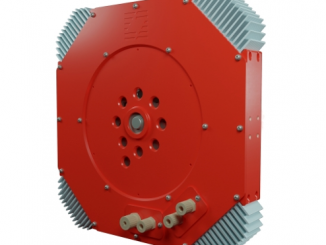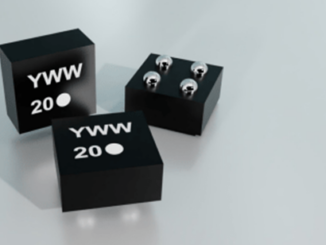By Dr. Kevin G. McGivern, McGivern Technologies

How is the “Cost” of a Transformer Determined?
To many customers the cost of a transformer is simply the monetary value at the time of purchase. In a broad sense this is adequate. After all, the material cost of a device is one of the biggest, if not the biggest, driver of the selling price. When you add the price differential between a transformer and other components on the circuit board you obtain a skewed view.
Understanding the Different Types of Transformers
I had a co-worker that stated to me rather bluntly: “I don’t see how there can be different types of transformers. I mean, there all just a bunch of wires wrapped around a core.” This individual is a highly intelligent person. I have had other individuals tell me that I practice “Black Magic” every time I design a transformer. How often have you heard these types of comments? If it was once, it was too often.
Transformer design follows very specific equations that will dictate how the device is going to work at any given frequency, voltage, wave form, and current. While developing an intuition on what the end design needs to look like is helpful, it is a learned trait — not magic.
With that said. The requirements for a power supply transformer and a current transformer are completely different. A pulse transformer and a gate drive transformer are similar, but have different requirements depending on load conditions, operating frequency, and wave form.
The type of transformer effects all the material utilized in the build. From the core to the insulation required, the core material and shape, and the spacing between windings are dictated by the requirements of the transformer.
How Cost is Defined
There are many ways to look at the “Cost” of a transformer. This ranges from the cost of the material to the impact on the system. The most basic cost of the transformer is the time and material to manufacture the device. A more complete picture is achieved when the impact on the system is considered.
Efficiency
The overall efficiency of any system is based on the efficiency of each individual component. The efficiency of the system will never be more than any transformer in the system. There is more to the efficiency of a transformer than the raw efficiency of a transformer.
Stability
Stability is a key criterion to any system. A poorly designed transformer has a dramatic effect on the stability. The capacitance and leakage inductance combine to define the shape of a waveform. When these are combined with the inductances and DCRs of each winding over-shoot and under-shoot are defined. They also define the damping factor of the transformer. A poorly designed transformer typically increases the number and size of components used in conjunction with the transformer to increase. Each of these added components are now a loss in efficiency.
Reliability
The reliability of a transformer is paramount to the reliability of the system. Reliability is more than how long the transformer will last. There are failure modes to a transformer that have a dramatic cause- effect relationship in the system.
Hard Failure
This is identified by a short between the primary side of the transformer and the secondary side of the transformer. The root of this problem lies in two primary failure mechanisms:
- Complete Break-Over — this is when a high voltage transient or sustained voltage between the primary and secondary shorts through the insulation material.
- One of the windings is broken due to a high voltage.
Capacitive Discharge
This is one of the toughest failures to detect. This is typified by failed components in the system with no apparent cause. What makes this hard to determine is the transformer, once taken out of the circuit, appears to be fully functional. In affect it is — as a transformer under static testing it is in fact “good”. It is the dynamic load that produces the “failure” of the transformer. This can be caused by using the wrong material, improper spacing between winding, and having the wrong Volts/Turn ratio. This also includes creep and strike distances that are not appropriate for the voltages of the system.
Partial Discharge
Partial Discharge is just that: a failure of a portion of the insulation system. This is caused when material is ionized inside of the transformer. This ionization causes intermittent failures within the transformer and shortens the life of the transformer.
Thermal Considerations
Heat is generated in two major portions of a transformer. If the size of the wire is not selected properly there will a large I2R loss in the windings. This loss effects the resistance of the windings and adds heat to the core. An improperly selected core will run hotter than desired. This is dictated by the shape of the core, the size of the core, and the material used in the core.
Repeatability
If a transformer cannot be manufactured consistently within the required criterion, it is probable that there will be many parts that are shipped at the outer fringes of the specifications. As in any process it is highly recommended that key factors are monitored to ensure that they not only meet the criteria, but they are well within the ranges specified in the criterion. This is where knowledge of SPC pays off.
Cost Summary
I maintain that the cost of a transformer is more than the dollar cost of the unit. If any of the above failures occur the overall functionality of the system is compromised. In the case of each of these failures one should determine the cost of the system failing and being out of commission. One also should look at the cost of operating the system. This cost can be broken into the cost of the energy to run the system and the cost of monitoring the system to ensure that it is operating correctly.
About the Author

Dr. Kevin G. McGivern is president of McGivern Technologies, a consulting firm based in Lakeville, CT. He has over 30 years of experience in the design and development of transformers, power supplies and controllers with a specialty in high voltage switching. He has a BSEET from University of Hartford, an MSEE from Western New England University and DSEE from Atlantic International University. His career has included positions with Hamilton Standard (now UTAS), Pitney Bowes and Bicron Technologies. He can be reached at www.McGivernTechnologies.com.



